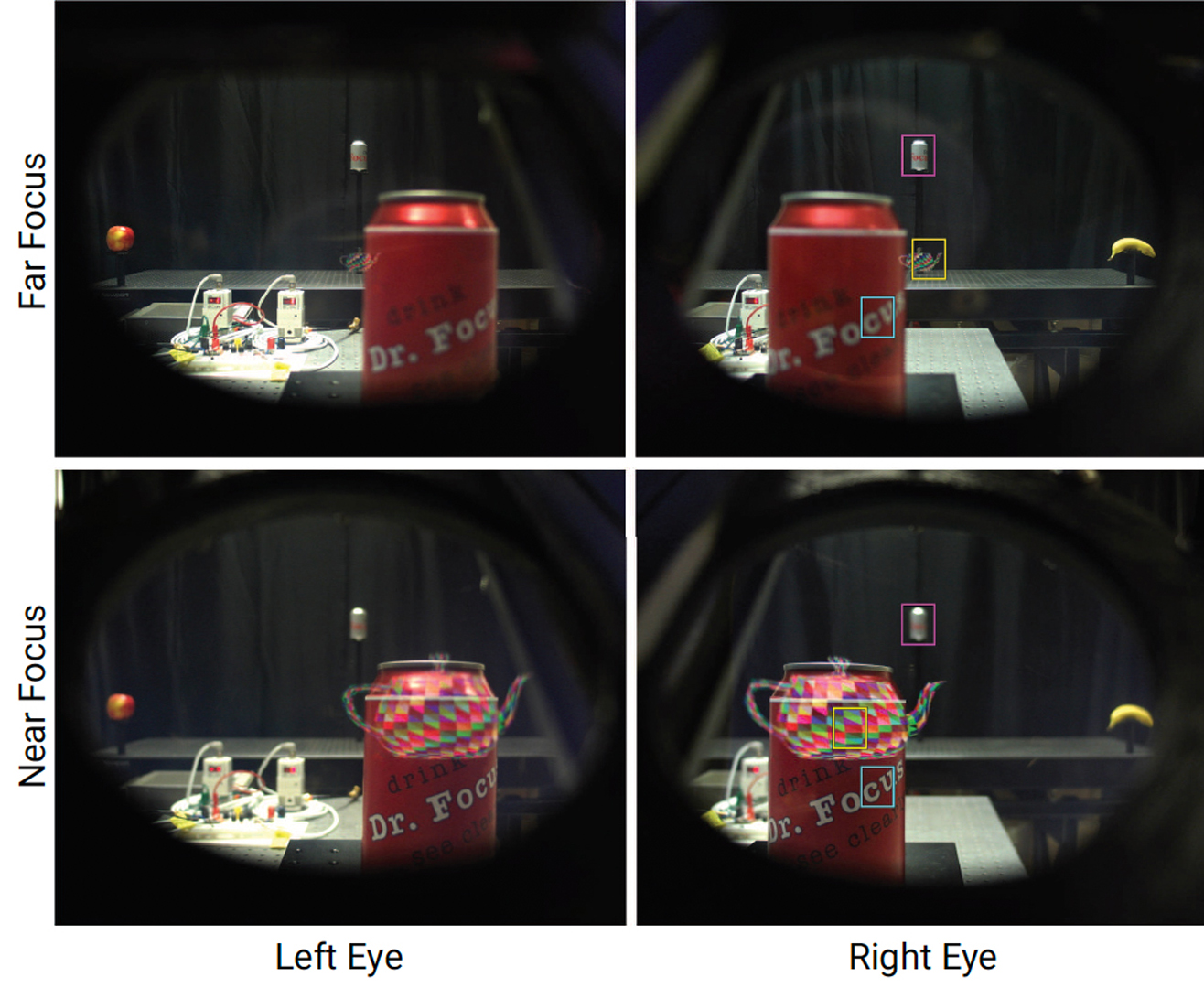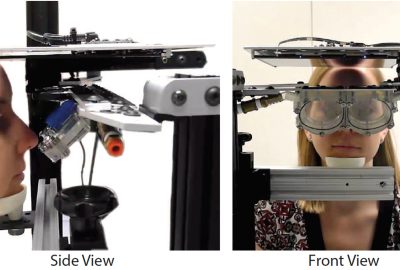“Membrane AR: Varifocal, Wide-Field-of-View Augmented Reality Display from Deformable Membranes” by Dunn, Tippets, Torell, Kellnhofer, Akşit, et al. …
Conference:
Experience Type(s):
E-Tech Type(s):
Entry Number: 15
Title:
- Membrane AR: Varifocal, Wide-Field-of-View Augmented Reality Display from Deformable Membranes
Organizer(s)/Presenter(s):
Description:
Accommodative depth cues, a wide field of view, and ever-higher resolutions present major design challenges for near-eye displays. Optimizing a design to overcome one of them typically leads to a trade-o. in the others. We tackle this problem by introducing an all-in-one solution – a novel display for augmented reality. The key components of our solution are two see-through, varifocal deformable membrane mirrors reflecting a display. They are controlled by airtight cavities and change the effective focal power to present a virtual image at a target depth plane. The benefits of the membranes include a wide field of view and fast depth switching.
Other Information:
To listen to the audio guide of this contribution in multiple other languages, visit: SIGGRAPH 2017 Emerging Technologies Audio Guides
References:
Kaan Akșit, Jan Kautz, and David Luebke. 2015. Slim near-eye display using pinhole aperture arrays. Applied optics 54, 11 (2015), 3422–3427.
Hrvoje Benko, Eyal Ofek, Feng Zheng, and Andrew D Wilson. 2015. FoveAR: Combining an Optically See-through Near-Eye Display with Projector-Based Spatial Augmented Reality. In Proceedings of the 28th Annual ACM Symposium on User Interface Software & Technology. ACM, 129–135.
Julie Carmigniani, Borko Furht, Marco Anisetti, Paolo Ceravolo, Ernesto Damiani, and Misa Ivkovic. 2011. Augmented reality technologies, systems and applications. Multimedia Tools and Applications 51, 1 (2011), 341–377.
David Dunn, Cary Tippets, Kent Torell, Petr Kellnhofer, Kaan Akșit, Piotr Didyk, Karol Myszkowski, David Luebke, and Henry Fuchs. 2017. Wide Field Of View Varifocal Near-Eye Display Using See-through Deformable Membrane Mirrors. IEEE Transactions on Visualization and Computer Graphics 23, 4 (April 2017), 1322– 1331. DOI:http://dx.doi.org/10.1109/TVCG.2017.2657058
David M Hoffman, Ahna R Girshick, Kurt Akeley, and Martin S Banks. 2008. Vergence–accommodation conflicts hinder visual performance and cause visual fatigue. Journal of vision 8, 3 (2008), 33–33.
Fu-Chung Huang, David Luebke, and Gordon Wetzstein. 2015. The light field stereoscope. ACM SIGGRAPH Emerging Technologies (2015), 24.
Paul V. Johnson, Jared AQ. Parnell, Joohwan Kim, Christopher D. Saunter, Gordon D. Love, and Martin S. Banks. 2016. Dynamic lens and monovision 3D displays to improve viewer comfort. Opt. Express 24, 11 (May 2016), 11808–11827. DOI: http://dx.doi.org/10.1364/OE.24.011808
Robert Konrad, Emily A. Cooper, and Gordon Wetzstein. 2016. Novel Optical Con- figurations for Virtual Reality: Evaluating User Preference and Performance with Focus-tunable and Monovision Near-eye Displays. In Proceedings of the 2016 CHI Conference on Human Factors in Computing Systems (CHI ’16). ACM, New York, NY, USA, 1211–1220. DOI:http://dx.doi.org/10.1145/2858036.2858140
Gregory Kramida. 2016. Resolving the Vergence-Accommodation Con.ict in Head- Mounted Displays. IEEE Transactions on Visualization and Computer Graphics 22, 7 (2016), 1912–1931.
Andrew Maimone, Douglas Lanman, Kishore Rathinavel, Kurtis Keller, David Luebke, and Henry Fuchs. 2014. Pinlight displays: wide field of view augmented reality eyeglasses using defocused point light sources. In ACM SIGGRAPH 2014 Emerging Technologies Booth 203. ACM.
Ashok Sisodia, Andrew Riser, and John R Rogers. 2005. Design of an advanced helmet mounted display (AHMD). In Defense and Security. International Society for Optics and Photonics, 304–315.
Keyword(s):
- head-mounted displays
- Near-eye displays
- See-through Displays
- Varifocal Displays
- Augmented reality









